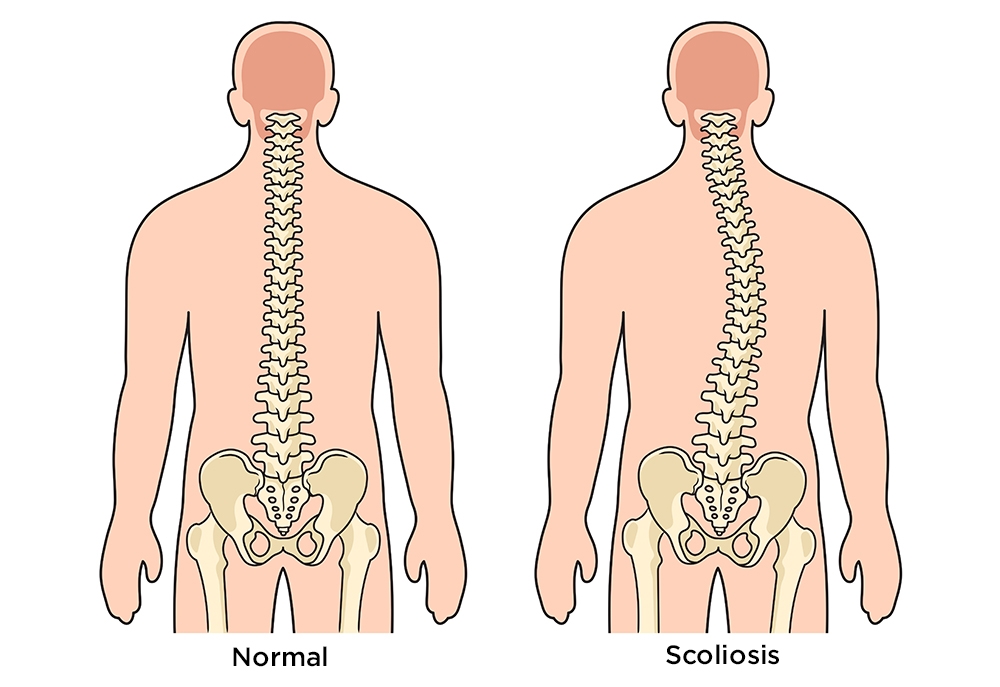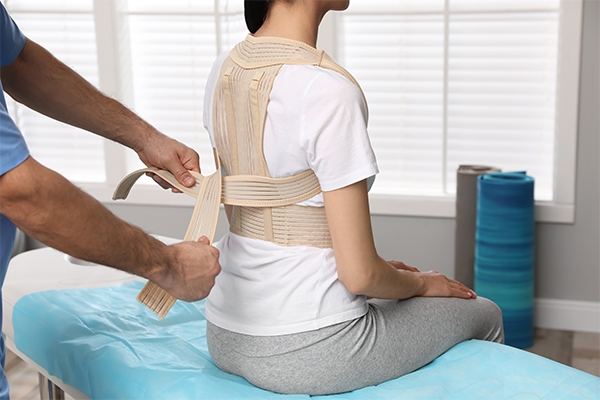Getting to Know Scoliosis: A Spinal Disorder That Is Often Ignored

Under normal conditions, the spine appears straight and parallel. However, certain conditions can cause the spine to bend toward one side of the body, forming an S or C pattern. This condition is known as scoliosis, which can occur from childhood to adulthood.
What causes it?
Interestingly, 80% of the causes of scoliosis are unknown. This is known as idiopathic scoliosis. Idiopathic scoliosis cannot be prevented and is not related to poor posture, sports, or frequently carrying heavy loads on the back.
Scoliosis is more common in girls (90%) than in boys. It can affect people of any age, from babies to adults, but it is most common in children aged 10 to 15.
A family history of scoliosis may increase the risk. Several genes related to bone growth, muscle balance, and the nervous system are thought to play a role in scoliosis.
There are several types of scoliosis:
- The spine's bones don't grow properly in the womb—this is called congenital scoliosis and is present at birth.
- an underlying nerve or muscle condition, such as cerebral palsy or muscular dystrophy—this is called neuromuscular scoliosis.
- wear and tear on the spine as you age—this is called degenerative scoliosis, which affects elderly people.
Signs of scoliosis

Many people don't realize they or their child has scoliosis because it often doesn't initially cause pain. However, there are some signs to look for:
- the head is not centered over the body;
- one shoulder being higher than the other;
- one shoulder blade being higher than the other and may sticking out more;
- unusual gaps between one arm and the trunk;
- one hip being higher than the other.
Some people with scoliosis experience back pain, especially if the curve is large and untreated. In more severe cases, it can cause shortness of breath and difficulty sitting. This condition is more common in adults.
Diagnosing scoliosis
The process of diagnosing scoliosis is quite simple. The first test is usually a forward bend test, in which the doctor examines the back to check for curved or asymmetrical curves.
If scoliosis is suspected, additional tests may include:
- X-rays: To determine the angle of the curve of the spine. The parts that are x-rayed are the back and sides.
- MRI or CT Scan: To see the soft tissue and bone structure condition in more detail.
From the examination results, the doctor will measure the angle of the curve (called the Cobb angle). Here's how to determine the severity:
- Mild: 10–24 degrees
- Moderate: 25–39 degrees
- Severe: 40 degrees or more
Complications that can occur
Although most people with scoliosis have mild abnormalities, scoliosis can sometimes cause complications, including
- Breathing problems. In severe scoliosis, the ribs can press on the lungs, making breathing difficult.
- Back problems. People who had scoliosis as children are more likely to have chronic back pain as adults, especially if the curve is large and untreated.
- Appearance. As scoliosis worsens, it can cause more noticeable changes, including uneven hips and shoulders, protruding ribs, and a sideways shift in the waist and trunk. People with scoliosis often become self-conscious about their appearance.
Treatment for scoliosis

Treatment aims to stop the curve's progression and prevent deformity. Observation and repeated examinations — the “wait and watch” approach — may be needed to determine whether the spine continues to curve. This is used when a person has a curve of less than 20 degrees and is still growing.
Therefore, treatment for scoliosis depends on age, the severity of the curve, and the likelihood of its worsening.
Many cases do not require special treatment, and only a tiny percentage require spinal surgery.
Mild scoliosis can improve with growth in infants or toddlers. If necessary, the doctor can use a cast or plastic brace to prevent the curve from worsening. Treatment using a brace will be carried out if the scoliosis curve is between 20 and 50 degrees.
Older children can wear a back brace until their growth ends. In some cases, surgery may be needed to regulate the growth of the spine until straightening surgery is finally performed.
Meanwhile, adults usually undergo treatment to reduce pain, such as painkillers, spinal injections, and, in some cases, surgery.



